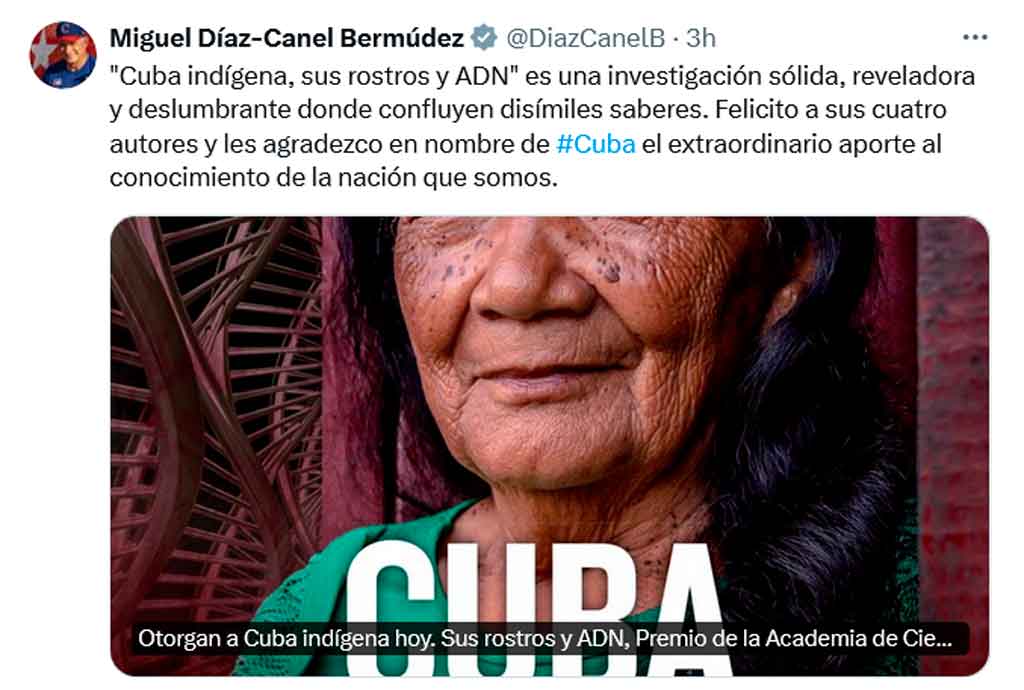In his profile on social network X, the president defined this work as a solid, revealing and dazzling investigation, where dissimilar knowledgeS converge.
In his message he congratulated the authors (Alejandro Hartmann, Beatriz Marcheco, Enrique J. Gómez, Héctor Garrido, Julio A. Larramendi) and thanked them on behalf of Cuba for “the extraordinary contribution to the knowledge of the nation that we are.”
The Academy of Sciences recognized that the work reflects the Aboriginal presence in the genetic and cultural heritage of Cuba, offering new signals about its history.
According to the opinion of the Prize of that institution: “The research presented is unique in its condition as a genomic study combined with the investigation of the social reality of the participating individuals, who are members of families with phenotypes similar to that of the Cuban aborigines” .
The material constitutes one of the first results of the Indigenous Cuba project, emerged in 2018, which combines photography, genetics and anthropology, and includes archeology and sociology.
The novel integration of science and art, through scientific photography, gives it important peculiarities.
Another contribution is the systematization of historical knowledge and previous anthropological research integrated into the text, the opinion added.
The Academy announced the 2023 awards, in which it recognized 84 works, in the areas of Agricultural Sciences and Fisheries (eight), Technical Sciences (seven), Natural and Exact Sciences (16), Biomedical Sciences (28) and Sciences Social and Humanistic (25), reported Radio Enciclopedia.
ef/gas/evm









